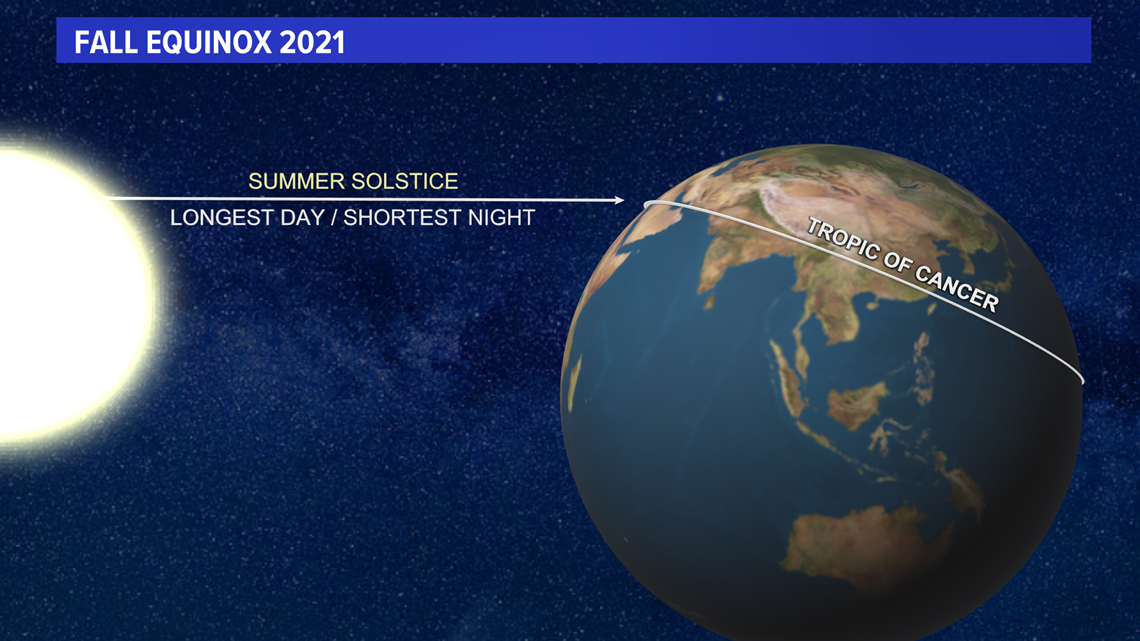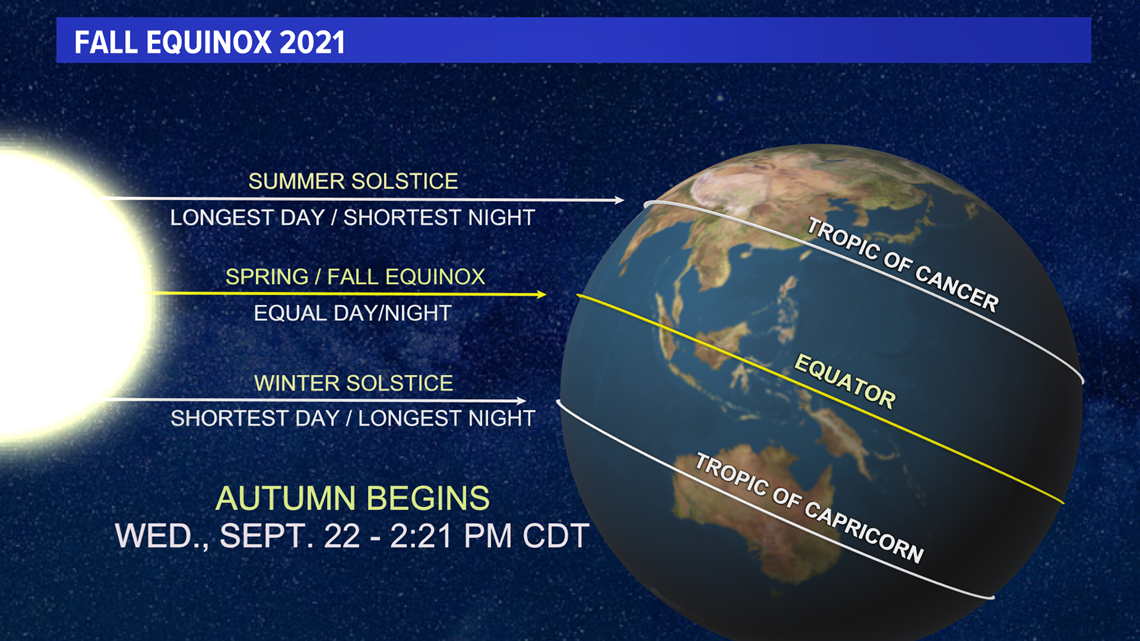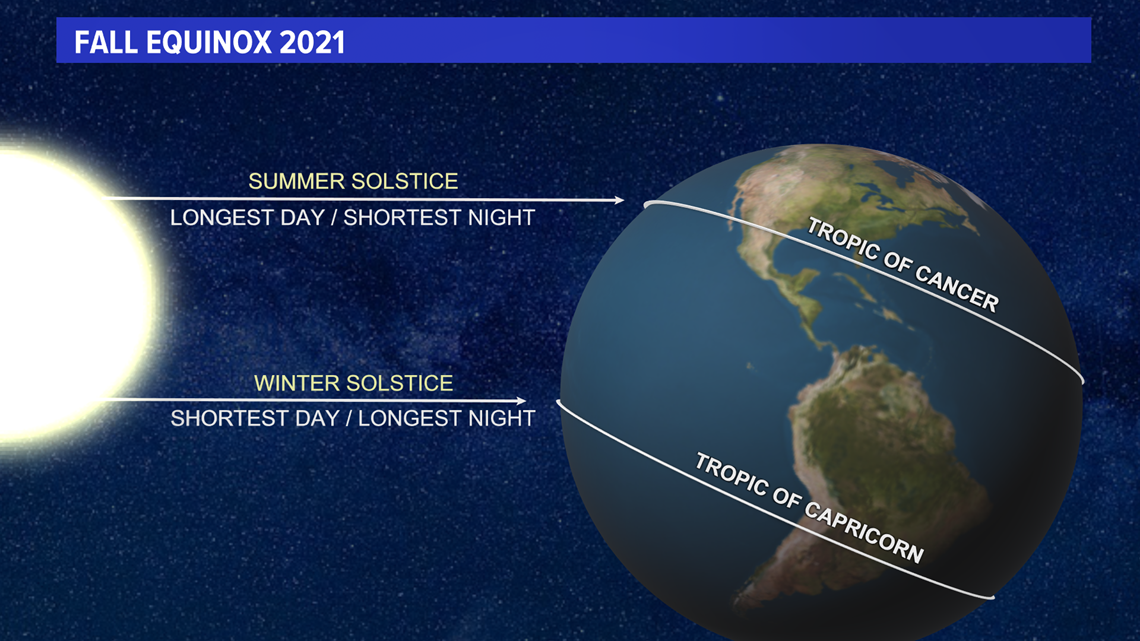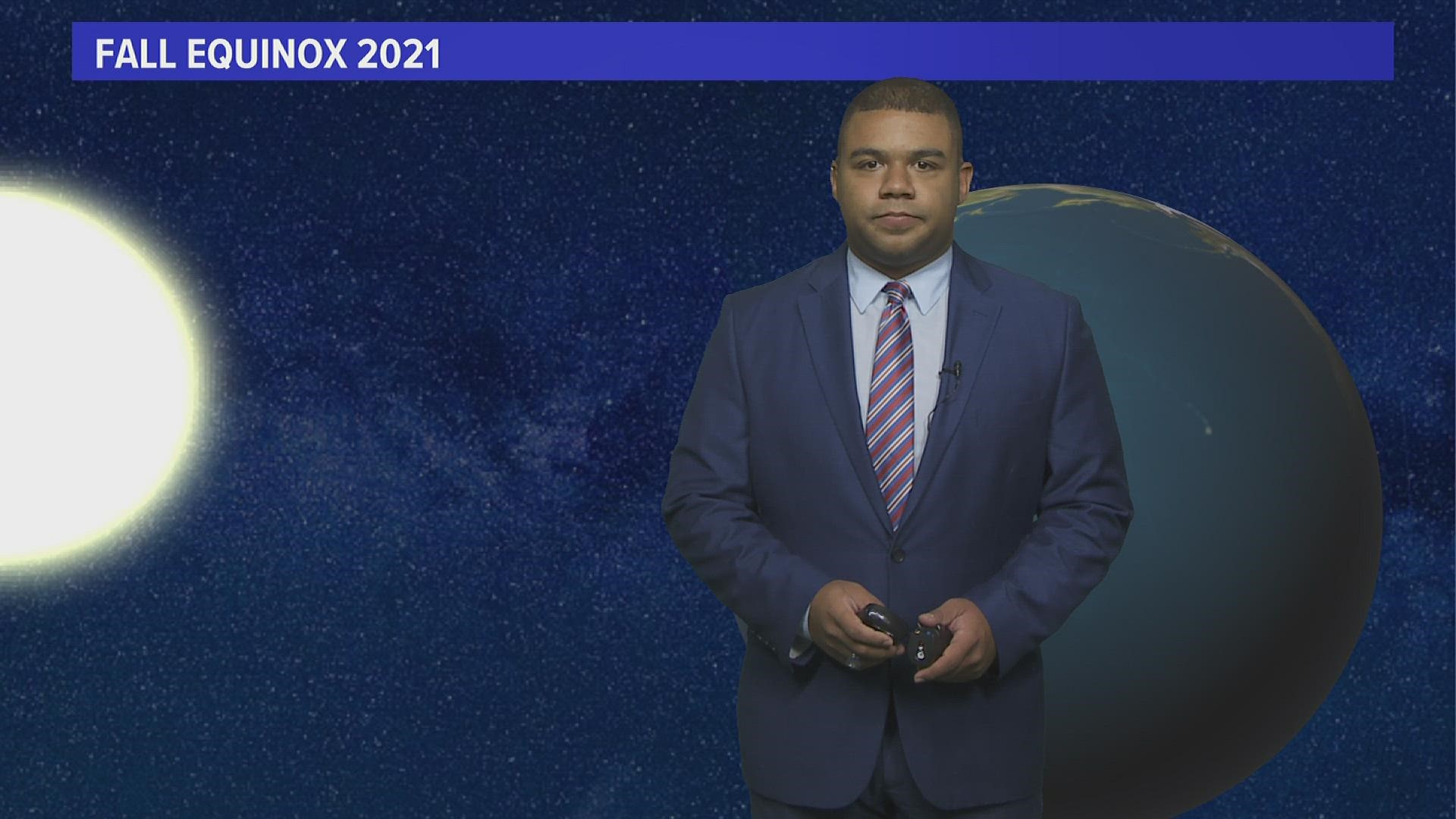TEMPLE, Texas — Whether you like it or not, Summer is now in the rear-view mirror, and we have begun the season that's marked by pumpkin spice and football. That season is fall. But how exactly did it turn from Summer to Fall? For that, we have to take a closer look at the Earth's axis.
As most of you know, the Earth rotates on its axis. It can't just rotate directly vertical, for it would mean everyone gets the same climate all the time, and it'd be rather boring to say the least! Thus, some areas of the globe get more sunlight during any given point in the year, which in turn, determines the climate/season for any given location for that time of year. It also determines who's days are longer and who's nights are longer.
So let's start with Summer, the season we just said peace out to. In simple terms, Summer is when the Northern Hemisphere (where we are) is tilted toward the Sun. As a result, we get the most direct sunlight.
During the Summer Solstice, the Sun's rays are right on top of the Tropic of Cancer, which in turn, gives the Northern Hemisphere its longest day and the shortest night. For those Down Under in the Southern Hemisphere, they get their longest night and shortest day because winter is kicking off for them. (We will explain more coming up.)
The term "Solstice" comes from the Latin words sol, meaning "sun", and sistere, meaning "To Stand Still." So when we talk about solstices, we refer to the sun directly standing still over the Tropic of Cancer in the case of Summer.


Then, it officially becomes Fall at 2:21 p.m. on Sept. 22, which is today! During the Fall Equinox (or the Autumnal Equinox), the Sun's rays hit directly on the Equator, ending Summer for us and kicking off Spring for our Australian friends.
The term "Equinox" comes from the Latin words aequi, meaning "equal" and nox, meaning "night". Thus, there is equal daylight and an "equal night" in both hemispheres on Sept. 22.


Then, we have what will comes after Fall for us: Winter, which would officially start at 9:58 a.m. on Dec. 21. This takes place when the Earth's axis is tilted away from the Sun and to the point where the its rays directly hit the Tropic of Capricorn in the Southern Hemisphere. Here in the Northern Hemisphere, we then get the shortest day and the longest night during the Winter Solstice while the folks Down Under get their longest day and shortest night as they kick off Summer.


Overall, when Earth, Wind and Fire ask if you "remember the 21st night of September," then "bah-dee-ya," you'll remember that it's the last night of Summer!

